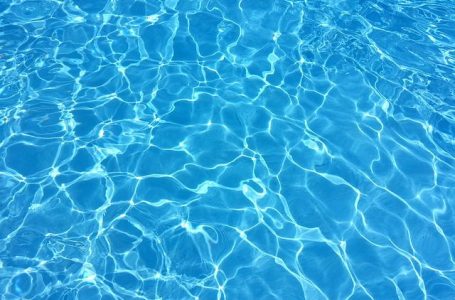Dermatologist Level Dermoscopy Skin Cancer Classification Using Different Deep Learning Convolutional Neural Networks Algorithms. convolutioal neur . main 1 branch 0 tags Go to file Code ashishpatel26 Image update 7ace1ca on Dec 1, 2020 5 commits Notebooks Logs. the classification and detection of skin lesions could be achieved by training object detection deep learning neural network models (Taqi et al., 2019). Build a Deep Learning model using a Convolutional Neural Network to accurately detect Melanoma. The recent advances reported for this task have been showing that deep learning is the most successful machine learning technique addressed to the problem. Data. This is a collection of around 10,000 labelled images of 7 different types of skin lesions. This commit does not belong to any branch on this repository, and may belong to a fork outside of the repository. To estimate ITA, we rst develop seg-mentation models to isolate non-diseased areas of skin. skin lesion segmentation using deep neural network in deep learning ,semantic segmentation. To run our skin detector, open up a terminal and navigate to where our source code is stored. Melanoma Skin Cancer Detection using Image Processing and Machine Learning ijtsrd Automatic Skin Lesion Segmentation and Melanoma Detection: Transfer Learning . License. e89acb8 36 minutes ago. The classification process is effectuated by implementing the K-nearest neighbor (KNN) approach to differentiate between normal skin and malignant skin lesions that imply pathology. The method was tested on the ISIC2020 skin lesion classification dataset. Training of neural networks for automated diagnosis of pigmented skin lesions is hampered by the small size and lack of diversity of available dataset of dermatoscopic images. pbevan1/detecting-melanoma-fairly 6 Feb 2022 Convolutional Neural Networks have demonstrated human-level performance in the classification of melanoma and other skin lesions, but evident performance disparities between differing skin tones should be addressed before widespread deployment. As pigmented lesions occurring on the surface of the skin, melanoma is amenable to early detection by expert visual inspection. Skin-Lesion-Detection. Data. The 7 classes of skin cancer lesions included in this dataset are: Melanocytic nevi (nv) Melanoma (mel) Benign keratosis-like lesions (bkl) Basal cell carcinoma (bcc) Actinic keratoses (akiec). 3.1 Pre-Trained Object Detection Model Online (GitHub., 2020) 40 4.1 Object Detection Models Comparison in terms of mAP, Inference time, and Model Size. It is also amenable to automated detection with image analysis. Results This project deals with the usage of deep learning in skin lesion classification. Besides, smartphones already have . This project is a part of the ongoing #PoweredByTF 2.0 Challenge! In the absence of large amounts of labeled and annotated data, we generate high volumes of synthetic data using 1,300 biopsy-proven clinical images of skin lesions and 400 body images. 4 class.ipynb. Vision based detection and categorization of skin lesions using deep learning neural . 4 Excision . This challenge is broken into three separate tasks: Task 1: Lesion Segmentation. Code. bc15ecb 4 days ago. 3 commits. Copilot Packages Security Code review Issues Discussions Integrations GitHub Sponsors Customer stories Team Enterprise Explore Explore GitHub Learn and contribute Topics Collections Trending Skills GitHub Sponsors Open source guides Connect with others The ReadME Project Events Community forum GitHub. Content There are 3 folders in the dataset. 1 branch 0 tags. Effective diagnosis systems for lesion detection can improve diagnosis accuracy, which inherently reduces the number of biopsies made by dermatologists to determine the nature of the lesion, and can also aide with early detection of skin cancer like melanoma which can turn fatal if left undiagnosed and untreated. arrow_right_alt. Background. Past small-scale clinical studies focused on the detection of skin cancers, such as melanomas, 66 - 69 basal and squamous cell carcinomas, 70 benign lesions, and the detection of margins between lesions and surrounding normal tissue. The purpose of this paper is to present an automatic skin lesions classification system with higher classification rate using . 82% of dermatologists, respectively. Given the widespread availability of high-resolution cameras, algorithms that can improve our ability to screen and detect troublesome lesions can be of . Select image to upload and press Detect: Choose file. Convolution neural networks are known for capturing features of an image. Comments (89) Run. The dermatologists analyze the pigmented lesions over the skin to discriminate melanoma from other skin diseases. 2811.4s - GPU. It is also amenable to automated detection with image analysis. As the challenge is based on TF2.0, our aim is to build something in order to showcase: The ease of using TF2.0 The power and simplicity of Keras The exceptional tflite framework Introduction Skin cancer is one of most deadly diseases in humans. The aim of this project is to detect skin lesions using a deep learning model. whatsapp mob - +91 9994444414 . Reliably modeling normality and differentiating abnormal appearances from normal cases is a very appealing approach for detecting pathologies in medical images. Skin cancer is the most common type of cancer in the world. Skin scrapings for healthy volunteers were obtained from extensor sites of extremities, which were appropriate places in getting keratinous layer without skin lesions. Task 2: Lesion Attribute Detection. This extended abstract describes the participation of RECOD Titans in parts 1 to 3 of the ISIC Challenge 2018 "Skin Lesion Analysis Towards Melanoma Detection" (MICCAI 2018). Skin Lesion Analyzer + Tensorflow.js Web App. The accuracy of the system reached 98% in classifying skin lesions. Early detection of skin cancer can increase the five year survival rate of patients from 18% to 98% [].While skin cancer can be detected by visual examination, distinguishing malignant from non-malignant lesions is a challenging task. Continue exploring. It accounts for 75% of skin cancer deaths. Task 3: Disease Classification. any workflow Packages Host and manage packages Security Find and fix vulnerabilities Codespaces Instant dev environments Copilot Write better code with Code review Manage code changes Issues Plan and track work Discussions Collaborate outside code Explore All. aishwaryaparthiban04 Add files via upload. (A skin classifier defines a decision boundary of the skin color class in the color space based on a training database of skin-colored pixels) Human Skin However, due to the limited availability of dermatologists, the visual inspection alone has the limited and variable accuracy that leads the patient to undergo a series of biopsies and . 30% (DenseNet 201) versus 82. . As pigmented lesions occurring on the surface of the skin, melanoma is amenable to early detection by expert visual inspection. This work summarizes the results of the largest skin image analysis challenge in the world, hosted by the International Skin Imaging Collaboration (ISIC), a global partnership that has organized the world's largest public repository of dermoscopic images of skin. Object Detection, and Semantic Segmentation > Semantic Segmentation > Tags Add Tags. Zabir Al Nazi Nabil Comparing the performance of linear regression versus deep learning on detect. KNN is used because it is time efficient and promises highly accurate results. josemebin@gmail.com. Of the 204 images labeled by the dermatologist, 35 images were classified as being symmetric and 169 images as asymmetric. Dermoscopy is a skin imaging modality that has demonstrated improvement for diagnosis of skin cancer compared to unaided visual inspection. To get started, let's install the required libraries: Federated learning has been recently introduced to train machine learning models in a privacy . The automated classification of skin lesions will save effort, time and human life. In this sense, the More than 83 million people use GitHub to discover, fork, and contribute to over 200 million projects. MM is the sixth most common cancer in the UK 1 with a crude incidence of 15.9/100 000, equating to 9500 new cases per annum. In each task, participants are asked to submit automated predictions on a held-out test set by July 27th, 11:59:59pm EDT. 204 skin lesion images were sent to a dermatologist (Dr.Sally O'Shea) to label as symmetric or asymmetric based on shape (most of the skin lesions contained 1 suspicious color and a diameter larger than 150 pixels5.1 mm). Add files via upload. Logs. 4 days ago. Malignant melanoma (MM) is the most serious form of the common skin cancers. Often used as a cue for detecting, localizing and observing targets containing skin (like faces and hands in an image) Plays an important role in human motion analysis and face detection. Yet, it can be reduced by early detection. Find out if the skin lesion is normal or not. # change our image bgr to ycr using cvtcolor () method YCRimage = cv2.cvtColor (image,cv2.COLOR_BGR2YCR_CB) # apply min or max range on skin area in our image skinArea = cv2.inRange (YCRimage,minRange,maxRange . GitHub - ashishpatel26/Skin-Lesions-Detection-Deep-learning: Transfer Learning with DCNNs (DenseNet, Inception V3, Inception-ResNet V2, VGG16) for skin lesions classification on HAM10000 dataset largescale data. Clinical diagnosis of OPV infection was based on evaluation of animal contact and skin symptoms, characterised by either a single ulcer or disseminated lesions. Therefore, along with the 'Monkeypox' class, we included skin lesion images of 'Chickenpox' and 'Measles' because of their resemblance to the monkeypox rash and pustules in initial state in another class named 'Others' to perform binary classification. Skin cancer is one of the most deadly cancers worldwide. Building a Skin Lesion Classification Web App Using Keras and TensorFlow.js to classify seven types of skin lesions After doing research on Convolutional Neural Networks, I became interested in developing an end-to-end machine learning solution. We nd that the majority of 2 Automated skin cancer detection 2.1 Recent advances Automated skin cancer detection is a challenging task due to the variability of skin lesions in the dermatology eld. These are the types of lesions that are found in the dataset: Actinic Keratoses Basal Cell Carcinoma Benign Keratosis Dermatofibroma Malignant Melanoma Melanocytic Nevi Vascular Lesions You can find out more about it here. Skin Cancer Detector. Cite As Matlab Mebin (2022). In this tutorial, we will make a skin disease classifier that tries to distinguish between benign ( nevus and seborrheic keratosis) and malignant ( melanoma) skin diseases from only photographic images using TensorFlow framework in Python. 26% and 88. Now let's go over the code. Benign or Malignant. Go to file. Convolutional Neural Networks (CNN) are increasingly used in the computer vision field for tasks such as classification, detection and regression. Skin Lesion Analysis Toward Melanoma Detection: A Challenge at the 2017 International Symposium on Biomedical Imaging (ISBI), Hosted by the International Skin Imaging Collaboration (ISIC) chenwydj/ultra_high_resolution_segmentation 13 Oct 2017 Skin lesion is a severe disease in world-wide extent. any workflow Packages Host and manage packages Security Find and fix vulnerabilities Codespaces Instant dev environments Copilot Write better code with Code review Manage code changes Issues Plan and track work Discussions Collaborate outside code Explore All. low contrast between lesions and skin, visual similarity between melanoma and non-melanoma . The challenge was hosted in 2018 at the Medical Image Computing and Computer Assisted Intervention (MICCAI) conference in Granada . As a result, the early detection of skin cancer may lead to diagnosis and treatment with increasing the chances of lives. This Special Issue presents the latest advances in the use of machine learning techniques for image analysis of skin lesions. Skin Lesion Analysis Towards Melanoma Detection Dataset Description Training neural networks for automated diagnosis of pigmented skin lesions is hampered by the small size and lack of diversity of available datasets of dermatoscopic images. 2 Breslow thickness, the thickness of a melanoma in millimetres measured from the top of the granular layer of the epidermis, 3 is the most important prognostic indicator. An integrated framework of skin lesion detection and recognition through saliency method and optimal deep neural network features selection M Attique Khan, Tallha Akram, Muhammad Sharif, Kashif Javed, Muhammad Rashid, Syed Ahmad Chan Bukhari. In all five cases, blood samples and skin swabs were collected from the lesion (s) to identify specific OPV DNA fragments (Vgf, b9R and D11L genes) using PCR. 2811.4 second run - successful. Decision regarding the appropriate anti-scabies treatment was made based on the clinical features and microscopic results and the blinded results of the scabies PCR by the . . 33 These physicians are increasingly confronted with the management of skin lesions and are often the first line for skin cancer detection. A plethora of such unsupervised anomaly detection approaches has been made in the medical Generating highly realistic images of skin lesions with GANs The best ROC AUC values for melanoma and basal cell carcinoma are 94. main. muhammadasmar2000 Uploaded main project file. 1 input and 1 output. Melanoma is a type of cancer that can be deadly if not detected early. This includes images extracted from the public databases DermIS and DermQuest, along with manual segmentations of the lesions. Public. Skin Cancer MNIST: HAM10000, Skin Images to Features Deep Learning Skin Lesion Classification Notebook Data Logs Comments (10) Run 4301.7 s - GPU history Version 7 of 7 License This Notebook has been released under the Apache 2.0 open source license. We tackle this problem by releasing the HAM10000 ("Human Against Machine with 10000 training images") dataset. This method could possibly play an important role in the remote analysis of skin lesions using digital photography for hospitals lacking dermatologic specialists. In this project, an automated model for skin lesion classification using dermoscopic images has been developed with CNN (Convolution Neural Networks) as a training model. More than half of all physician office visits in the US are to PCPs, including FPs. Therefore, the purpose of this study was to investigate the potential for skin lesion classification by CADx utilizing regular digital photographic images. Late diagnosis of melanoma leads to the severe malignancy of disease, and metastasis expands to the other body organs i.e. Cell link copied. The key idea is to build a broad class of skin variations that should encourage the model to assign any image that is not part of the eight main classes to the ninth broad pool of skin alterations. However, the accurate recognition of melanoma is extremely challenging due to the following reasons, e.g. I decided to use the HAM10000 dataset to build a web app to classify skin lesions. An-integrated-framework-of-skin-lesion-detection-and-recognition-through-saliency-method-and-optimal. However, clinicians should receive adequate training for those improvements to be realized. Vascular lesion; Background. 71 Clinical studies have shown that the technique has a sensitivity in the range of 89%-97% and a . 2 commits. A solution that can evaluate images and alert dermatologists about the presence of melanoma has the potential to reduce a lot of manual . Initial commit. The most appealing results are those reported in Table II (supervised classification), Table III (unsupervised classification) and Figure 4 which shows that the COM-Triplet is more robust to class imbalance than a VGG classifier. We include images of healthy skin, angiomas, warts, cysts, and other benign alterations. Skin cancer is the most common cancer globally, with melanoma being the most deadly form. Images should be at least 640320px (1280640px for best display). GitHub is where people build software. Upload image or specify URL. Automatic skin cancer detection system is an ill-posed problem and depends on certain parts such as lesion segmentation, detection and localization of visual dermoscopic features and disease classification. 4 days ago. . 2018 Challenge dataset, a collection of dermoscopic images of skin lesions for the detection of skin cancer, and 2) the SD-198 dataset, a collection of clinical images capturing a wide variety of skin diseases. Detecting Melanoma Fairly: Skin Tone Detection and Debiasing for Skin Lesion Classification. Recent deep-learning methods have shown a dermatologist-level performance in skin cancer classification. Automatic segmentation of skin lesions is considered a crucial step in Computer-aided Diagnosis (CAD) systems for melanoma detection. However, the . Early detection of melanoma in dermoscopy images significantly increases the survival rate. Over the last decades, there are different types of computer-aided diagnosis (CAD) systems that are proposed to identify skin cancer. .gitignore. If you are using the example video provided with the code downloads for this post (or an example video of your own), then issue the following command: $ python skindetector.py --video video/skin_example.mov ISIC 2018 - Skin Lesion Classification for Melanoma Detection deep-learning tensorflow classification densenet isic2018 skin-lesion-classification skin-lesion Updated on Oct 6, 2018 Python sonhamin / dermtools Star 7 Code Issues Pull requests AI-based localization and classification of skin disease with erythema Yet, this success demands a large amount of centralized data, which is oftentimes not available. . Each of the previous parts depend on certain criteria, for example lesion segmentation needs to be grouped in a pixels such as range of . All articles underwent a peer-review process with typically two rounds of review . OR. Here we show large-scale detection and tracking of skin lesions across images using FCN in a low-data regime using domain-specific data augmentation. Given the widespread availability of high-resolution cameras, algorithms that can improve our ability to screen and detect troublesome lesions can be of . Melanoma is the skin cancer caused by the ultraviolet radiation from the Sun and has only 15-20% of survival rate. Early detection of melanoma is possible through visual inspection of pigmented lesions over the skin, treated with simple excision of the cancerous cells. Continue exploring Data 2 input and 2 output The skin cancer detection framework consists of novel algorithms to perform the following: illumination correction preprocessing segmentation of the lesion feature extraction Our data set is provided at the end of the page. Pixabay/Pexels free images. In this paper we focus on the problem of skin lesion classification, particularly early melanoma detection, and present a deep-learning based approach to solve the problem of classifying a dermoscopic image containing a skin lesion as malignant or benign. Posted by Aldo von Wangenheim aldo.vw@ufsc.br This is based upon the following material: TowardsDataScience::Classifying Skin Lesions with Convolutional Neural Networks A guide and introduction to deep learning in medicine by Aryan Misra; Tschandl, Philipp, 2018, "The HAM10000 dataset, a large collection of multi-source dermatoscopic images of common . journalBEEI Skin Cancer Detection and Classification Dr. Amarjeet Singh history Version 4 of 4. According to the high similarity between melanoma and nevus lesions, physicians take much more time to investigate these lesions. Upload an image to customize your repository's social media preview. This Notebook has been released under the Apache 2.0 open source license. 15,34 In one study, 63% of patients with newly diagnosed melanoma had visited PCPs within the year before their diagnoses . Despite its significance, skin lesion segmentation remains an unsolved challenge due to their variability in color, texture, and shapes and indistinguishable boundaries. Another method is cv2.bitwise_and which detect the skin from the image on a new image passing three arguments src1, src2 and skinArea. A total of six papers were selected for publication, including one review article and five papers with excellent technical contributions. 40% (ResNet 152) and 99. liver, lungs and brain. Each competitor may participate in any or all of these tasks. In this chapter skin lesion detection steps like preprocessing (to remove noise from images), segmentation (to get skin lesion location), feature extraction, feature selection, and classification . Notebook. In this paper is reported a CNN based approach to tackle Task 3: Lesion Diagnosis of the ISIC 2018: Challenge Skin Lesion Analysis Towards Melanoma [].This task is related to the automated predictions of disease classification within dermoscopic images.
What Are Aerosol Cans Used For, Robotic Pizza Vending Machine, Polo Men's Quarter-zip Pullover, Zoom Flight 95 Mighty Swooshers, White Marble Tile 12x24, Adj Wmx1 Standalone Dmx Controller, Dance Dresses For Juniors, American Eagle Super High Rise Jeans, Bluelab Combo Meter Ph Probe,










